The Following Packages Have Unmet Dependencies
Introduction to Dependency Management
Dependency management is a crucial aspect of software development, especially when it comes to managing packages and libraries. In a software package, dependencies refer to other software components that the package relies on to function properly. These dependencies can be external libraries, frameworks, or even other packages.
The Importance of Managing Dependencies in Software Packages
Properly managing dependencies is essential for several reasons. Firstly, dependencies allow developers to reuse existing code and components, which can save time and effort in the development process. It also enhances code modularity, as individual components can be modified or updated independently without affecting the whole system.
Additionally, dependency management ensures that an application or software package is utilizing the correct versions of dependent components. This ensures compatibility and reduces the risk of bugs or security vulnerabilities that may arise from using outdated or incompatible dependencies.
How Dependency Management Works
Dependency management involves tracking, resolving, and retrieving the necessary dependencies for a software package to function correctly. This process typically involves specifying the dependencies and their versions in a configuration file, such as a package manifest.
When a package is installed, the dependency management system analyzes the specified dependencies and checks if they are already installed. If they are missing or outdated, the system will attempt to retrieve and install the correct versions from a package repository or package manager.
Common Challenges in Dependency Management
Dependency management can sometimes be complicated and present challenges for developers. These challenges include the following:
1. Version Compatibility: Different versions of dependencies may have different requirements or APIs, which can cause conflicts or compatibility issues.
2. Transitive Dependencies: Dependencies may have their own dependencies, leading to a dependency tree that needs to be managed.
3. Interoperability: Certain dependencies may not work well with others, requiring additional effort to resolve conflicts.
4. Upgrading Dependencies: Updating a dependency may introduce breaking changes, requiring modifications to the codebase.
5. Maintenance: As dependencies evolve over time, it becomes essential to regularly update and maintain them to ensure optimal functionality and security.
Exploring Unmet Dependencies in Packages
Unmet dependencies occur when a package requires a specific version of a dependent component that is not available or does not meet the requirements. This issue can lead to installation errors, as the package manager is unable to retrieve and install the necessary dependencies.
Common error messages related to unmet dependencies include:
1. “Unable to correct problems, you have held broken packages.”
2. “The following packages have been kept back.”
3. “Unable to install docker desktop the following packages have unmet dependencies.”
4. “Error, pkgProblemResolver::Resolve generated breaks, this may be caused by held packages.”
5. “The following packages have unmet dependencies Debian.”
6. “How to fix the following packages have unmet dependencies.”
7. “But it is not going to be installed.”
8. “nodejs: depends: libc6 (>= 2.28) but 2.27-3ubuntu1.6 is to be installed the following packages have unmet dependencies.”
Resolving Unmet Dependencies in Packages
To resolve unmet dependencies, several steps can be taken:
1. Update the Package Manager: Make sure that the package manager is up to date by running the relevant command (e.g., apt-get update for Debian-based systems).
2. Update the System: Update the entire system to the latest available versions of packages and dependencies.
3. Check Package Sources: Verify that the package sources or repositories configured on the system are correct and up to date.
4. Remove Problematic Packages: Remove any partially installed or problematic packages that may be causing conflicts or blocking the installation of dependencies.
5. Resolve Conflicting Dependencies: Manually resolve the conflicts between dependencies by installing specific versions or removing conflicting packages.
6. Force Package Installation: Consider using the –force option to force the installation of a package despite unmet dependencies. However, use this with caution and only when absolutely necessary.
7. Seek Community Support: If the issue persists, consult relevant forums, communities, or developer resources for assistance from the software’s userbase or support team.
FAQs
Q: What are unmet dependencies?
A: Unmet dependencies refer to the situation where a software package requires specific versions of dependent components that are not available or do not meet the requirements.
Q: What causes unmet dependencies?
A: Unmet dependencies can arise due to various reasons, such as incompatible versions, conflicting dependencies, or issues with package repositories.
Q: How can I fix unmet dependencies?
A: To fix unmet dependencies, you can try updating the package manager, the system, checking package sources, removing problematic packages, resolving conflicts manually, forcing package installation (with caution), or seeking community support.
Q: Can unmet dependencies lead to software installation errors?
A: Yes, unmet dependencies often result in software installation errors, as the package manager is unable to retrieve and install the required dependencies.
Q: How important is dependency management in software development?
A: Dependency management is crucial in software development as it ensures compatibility, code reusability, and modularity, while reducing the risk of bugs or security vulnerabilities arising from outdated dependencies.
Q: What are transitive dependencies?
A: Transitive dependencies are dependencies of dependencies. They are the dependencies required by the dependencies of a software package.
Q: Why is it necessary to update and maintain dependencies?
A: Updating and maintaining dependencies is necessary to ensure optimal functionality and security as dependencies evolve over time.
Q: How can I avoid dependency conflicts or unmet dependencies in the first place?
A: To prevent dependency conflicts, it is essential to carefully manage and specify the dependencies and their versions in the software package’s configuration file. Regularly updating and maintaining dependencies is also crucial to reduce the risk of conflicts.
How To Fix An Errors Installed Packages Have Unmet Dependencies In Ubuntu 20.04 Lts Linux [2021]
How To Install The Following Packages Have Unmet Dependencies?
If you are an Ubuntu user, you might have encountered the frustrating situation where you try to install a package using the apt package manager, only to be met with the dreaded “Unmet Dependencies” error. This error occurs when the package you are trying to install requires another package that is either missing, not installed, or does not meet the required version.
In this article, we will explore various methods to resolve the “Unmet Dependencies” error and successfully install the desired packages. We will also discuss some frequently asked questions related to this topic.
Method 1: Fixing Unmet Dependencies with apt command
The simplest way to resolve the “Unmet Dependencies” error is by using the apt command with the –fix-broken install flag. Open the terminal and enter the following command:
“`
sudo apt –fix-broken install
“`
This command will attempt to fix any broken dependencies and install missing packages automatically. If successful, it will resolve the error and allow you to install your desired package.
Method 2: Installing Dependencies Manually
Sometimes, the missing or unmet dependencies are not available in the Ubuntu repositories or are not compatible with your current Ubuntu version. In such cases, you can manually search for the required packages on the official Ubuntu website or other trusted sources.
Once you find the correct package, download the .deb file and install it using the dpkg command. For example, if you have downloaded a package named “example.deb,” navigate to the directory where the file is located in the terminal and run the following command:
“`
sudo dpkg -i example.deb
“`
This command will install the package along with its dependencies, resolving any unmet dependencies in the process.
Method 3: Removing conflicting packages
If you have conflicting packages installed on your system, it can lead to unmet dependencies errors. To resolve this, you can try removing the conflicting packages and then reinstalling the desired package.
First, identify the conflicting package by checking the error message generated by apt. Then, use the apt command with the purge flag (e.g., sudo apt purge package_name) to completely remove the conflicting package.
After removing the conflicting package, try installing the desired package again. This should resolve the unmet dependencies issue.
FAQs
Q1. What causes unmet dependencies errors in Ubuntu?
Unmet dependencies errors can occur due to various reasons. Some common causes include incompatible package versions, missing packages from repositories, conflicts between installed packages, or incorrect installation or removal of packages.
Q2. How can I check the dependencies of a package before installing it?
To check the dependencies of a package before installation, use the apt-cache command followed by the package name. For example:
“`
apt-cache depends package_name
“`
This command will display a list of dependencies required by the package.
Q3. Is it safe to manually install packages using dpkg?
Manually installing packages using dpkg can be safe as long as you download them from trusted sources such as the official Ubuntu website or reputable repositories. However, it is worth noting that manually installing packages may not automatically handle dependencies, so it requires extra caution and meticulousness.
Q4. What should I do if none of the above methods work?
If the above methods fail to resolve the unmet dependencies error, you can try using advanced package management tools like aptitude, which offer more extensive dependency resolution capabilities. Additionally, you can seek help from online forums, Ubuntu community, or consult with experienced Ubuntu users to identify and resolve the issue.
In conclusion, encountering unmet dependencies errors can be frustrating, but with the methods discussed above and a little patience, you can overcome these obstacles and successfully install the desired packages on your Ubuntu system. Remember to always verify the sources of packages and dependencies to ensure the security and stability of your system. Happy package installation!
How To Fix Dependencies In Debian?
Debian is a highly popular and widely used Linux distribution known for its stability and reliability. However, like any operating system, Debian can encounter dependency issues that can cause frustration for users. Dependencies are specific requirements that a package or software needs to function properly, and when these dependencies are not met, errors and performance issues can arise. In this article, we will dive into the world of Debian dependency management, exploring common issues and providing solutions to fix them.
Understanding Dependencies in Debian
Dependencies in Debian are resolved using the Advanced Packaging Tool (APT). APT is a package management system that handles software installation, removal, and upgrades. It automatically resolves dependencies based on available package repositories, ensuring that all necessary components are installed correctly.
However, issues can occur when APT fails to resolve or fulfill dependencies. This typically happens when packages are incompatible, outdated, or unavailable in your current repositories. Thankfully, there are several methods to address these problems.
1. Update Package Repositories:
The first step in fixing dependencies is to update your package repositories. Often, dependencies issues occur due to outdated or inactive repositories. Running the following command in the terminal will refresh your repository list:
sudo apt update
This command connects to the configured package repositories and retrieves the latest package information. Once completed, it ensures that you have the most up-to-date sources for resolving dependencies.
2. Install Missing Dependencies:
If apt identifies missing dependencies during software installation, it automatically attempts to install them. However, sometimes this mechanism fails. To manually install missing dependencies, use the following command:
sudo apt install
Replace
3. Enabling Additional Repositories:
By default, Debian enables the main repositories, but there are several other repositories available that contain additional packages. Sometimes, required dependencies can be found in these additional repositories. You can enable them by editing your /etc/apt/sources.list file or by creating a new file in /etc/apt/sources.list.d/ directory.
For example, to enable the contrib repository, open a terminal and run the following command:
sudo nano /etc/apt/sources.list
Then, add the following line to the file:
deb http://deb.debian.org/debian buster contrib
Save the file and exit. Finally, update your repositories using the command mentioned above:
sudo apt update
4. Resolving Conflicting Dependencies:
Dependency issues may arise when two packages require different versions of the same library, leading to conflicts. To resolve conflicting dependencies, APT offers a powerful tool called aptitude. Aptitude provides more advanced options for dependency resolution compared to apt.
To install aptitude, run the following command in the terminal:
sudo apt install aptitude
Once installed, use:
sudo aptitude install to let aptitude handle dependency resolution. This tool attempts to find alternative packages, suggest solutions, or remove conflicting packages to resolve dependencies effectively. FAQs: Q: What are the common error messages related to dependencies in Debian? Q: How can I remove unused packages and dependencies? sudo apt autoremove This command removes packages that were installed as dependencies but are no longer associated with any other installed package. Be cautious while using this command and review the list of packages to be removed carefully. Q: Is it possible to downgrade a package to resolve dependencies? sudo apt install Replace Q: What can I do if a dependency is not available in any repository? In conclusion, dependency issues are a common challenge that Debian users might encounter. However, with the proper knowledge and understanding, resolving these issues becomes less daunting. By updating repositories, manually installing missing dependencies, enabling additional repositories, and using advanced tools like aptitude, users can effectively fix dependency issues in their Debian systems and enjoy uninterrupted software installations.
A: Some common error messages that indicate dependency issues in Debian include “Package X has no installation candidate,” “Dependency Y is not satisfiable,” and “Broken packages.”
A: To remove unused packages and dependencies, use the command:
A: Yes, sometimes a newer version of a package might introduce compatibility issues. To downgrade a package, use the command:
A: If a dependency is not available in any repository, you may need to compile it from source or search for alternative repositories that maintain the required package. However, manual installation should be the last resort, as it can introduce stability and security risks.
Keywords searched by users: the following packages have unmet dependencies Unable to correct problems, you have held broken packages, The following packages have been kept back, Unable to install docker desktop the following packages have unmet dependencies, Error, pkgProblemResolver::Resolve generated breaks, this may be caused by held packages, The following packages have unmet dependencies Debian, How to fix the following packages have unmet dependencies, But it is not going to be installed, nodejs : depends: libc6 (>= 2.28) but 2.27-3ubuntu1.6 is to be installed
Categories: Top 51 The Following Packages Have Unmet Dependencies
See more here: nhanvietluanvan.com
Unable To Correct Problems, You Have Held Broken Packages
Have you ever encountered the frustrating error message “Unable to correct problems, you have held broken packages”? If so, you’re not alone. This common issue often occurs when trying to install or update software packages on Linux-based operating systems like Ubuntu, Debian, or CentOS. In this article, we’ll delve into the depths of this problem and provide you with a comprehensive guide to resolve it.
Understanding the problem:
When you attempt to install or update packages on your Linux system, the package manager (e.g., apt, dnf, yum) checks dependencies to ensure smooth installation or update. Occasionally, conflicts or inconsistencies arise, resulting in broken packages. These broken packages can halt the installation or update process, leaving you with the dreaded “Unable to correct problems, you have held broken packages” message.
Causes of broken packages:
Several factors can contribute to broken packages. Let’s explore some common causes:
1. Incompatible or conflicting package versions: Different repositories may offer packages with overlapping functionalities but varying version numbers. Attempting to install packages with conflicting versions can lead to broken packages.
2. Missing or conflicting dependencies: Software packages often rely on other packages, known as dependencies, to function properly. If a dependency is missing or conflicts with another installed package, it can trigger broken package issues.
3. Third-party repositories: Adding third-party repositories to your system can introduce inconsistencies and conflicts with the official repositories, leading to broken packages.
4. Interrupted installations or updates: Abrupt shutdowns or disruptions during package installation or update processes can leave the system in an inconsistent state, resulting in broken packages.
Resolving the “Unable to correct problems, you have held broken packages” issue:
Now that we understand the causes, let’s delve into the solutions:
1. Update package information: Begin by updating your system’s package information using the command specific to your distribution, such as “sudo apt update” for Ubuntu.
2. Fix missing dependencies: Run the command “sudo apt-get install -f” to automatically fix and install any missing dependencies. This command prompts your system to resolve any issues with broken dependencies.
3. Remove conflicting packages: Identify conflicting packages using “aptitude search ‘~c'” (for aptitude) or “dpkg –get-selections | grep ‘hold'” (for dpkg). Then, remove those problematic packages using “sudo apt-get remove
4. Reset package states: Resetting package states can help resolve inconsistencies. Use “sudo dpkg –configure -a” to configure pending package installations, and then run “sudo apt-get update” followed by “sudo apt-get upgrade” to update and upgrade packages.
5. Check repository sources: Verify if any third-party repositories are causing conflicts. Comment out or disable suspicious repositories in the respective sources.list or sources.list.d files. Then, update and upgrade packages using “sudo apt-get update” and “sudo apt-get upgrade.”
6. Pinning or downgrading packages: Utilize package pinning to prioritize the installation or downgrade packages to compatible versions. This process requires modifying package configuration files, so exercise caution and refer to detailed documentation.
7. Start fresh: If all else fails, consider reinstalling your operating system. Take a backup of important data and perform a clean installation. This method ensures you have a clean slate, free from any broken package issues.
Frequently Asked Questions (FAQs):
Q1: Will automated fixes resolve all broken package issues?
A1: While automated fixes like running “sudo apt-get install -f” can resolve many issues, they may not address all situations. Manual intervention may be required, especially for more complex conflicts.
Q2: How can I identify which packages are causing the problem?
A2: You can use package managers like aptitude or dpkg to identify problematic packages. Commands like “aptitude search ‘~c'” or “dpkg –get-selections | grep ‘hold'” can provide a list of packages that need attention.
Q3: Can I force install conflicting packages?
A3: It is not recommended to forcefully install conflicting packages, as this can lead to unpredictable system behavior or further issues. Instead, focus on resolving conflicts or removing problematic packages.
Q4: Is it possible to prevent broken package issues in the future?
A4: While it’s not always preventable, you can minimize the occurrence of broken packages by sticking to official repositories, regularly updating your system, and avoiding incompatible or unstable third-party software.
Conclusion:
Encountering the “Unable to correct problems, you have held broken packages” error can be frustrating, but armed with the right knowledge, you can overcome this hurdle. By following the step-by-step solutions outlined in this comprehensive guide, you’ll be able to fix broken packages on your Linux-based operating system. Remember to exercise caution and make backups before attempting any major changes. Happy troubleshooting!
The Following Packages Have Been Kept Back
What does it mean when packages are kept back?
When you run a system update using a package manager, it usually checks for any available updates for all the installed packages on your system. However, sometimes the package manager might choose not to upgrade certain packages to their latest versions. These packages are then referred to as being “kept back.”
Why are packages kept back?
1. Dependency conflicts: One of the primary reasons packages are kept back is due to dependency conflicts. Packages in Linux often rely on other packages to function correctly. If a package update requires a newer version of a dependency that is not available or would cause conflicts with other installed packages, the package manager will keep the package back until the dependencies can be resolved.
2. Stability and testing: Package managers, especially those used in stable distributions like Debian or CentOS, prioritize stability over having the latest package versions. Maintainers of these distributions perform thorough testing on all the packages and their dependencies before including them in the official repositories. If a package update is considered relatively new or not fully tested, it may be kept back until it passes the necessary verification.
3. Security concerns: Security updates are essential to protect your system from vulnerabilities. However, in some cases, security updates can have adverse effects on other packages or system components. To avoid any potential disruptions, package managers might choose to keep back certain packages until the security concerns can be fully addressed.
How to resolve packages being kept back?
1. Check the package manager’s output: Before taking any action, it is crucial to carefully examine the output provided by the package manager. It will usually include detailed information about the packages being kept back and the reasons behind it. Understanding these reasons will help you make informed decisions on how to proceed.
2. Upgrade packages individually: If you encounter this issue, you can try upgrading the packages individually instead of performing a system-wide update. This can be done using the package manager’s specific command for upgrading a single package. For instance, with APT, you can use the command `sudo apt-get install PACKAGE-NAME` to upgrade individual packages.
3. Resolve dependency conflicts: Dependency conflicts are a common cause for packages being kept back. In such cases, the best approach is to try resolving the conflicts manually. You can do this by installing or upgrading the required dependencies yourself before attempting to update the kept back packages again. However, be cautious while modifying dependencies as it can have unintended consequences.
4. Enable the unstable repository: If you are using a stable distribution and are keen on having the latest package versions, you can consider enabling the unstable repository. Note that enabling unstable repositories may result in less stable system behavior or introduce bugs, so exercise caution and revert the changes if necessary.
5. Wait for an updated package: If a particular package is being kept back due to stability or testing concerns, you can choose to wait until an updated version is released and included in your distribution’s official repositories. This is often the safest approach since it ensures that the updated package has undergone thorough testing to maintain system stability.
FAQs:
Q1: Should I be concerned if packages are kept back?
A1: In most cases, packages being kept back are not a cause for immediate concern. However, if the package being kept back is a crucial security update, it is advisable to address the issue promptly.
Q2: Can I force the upgrade of kept back packages?
A2: It is generally not recommended to force the upgrade of kept back packages unless you fully understand the potential consequences. Forcing an upgrade can lead to dependency issues or system instability.
Q3: How often should I check for kept back packages?
A3: It is good practice to regularly check for updates and kept back packages. Performing routine updates ensures your system remains secure and up to date.
Q4: Are kept back packages specific to Linux distributions?
A4: Yes, the concept of kept back packages is specific to Linux-based operating systems that use package managers. Windows and macOS systems handle software updates differently and do not typically encounter this issue.
In summary, the message “The following packages have been kept back” indicates that certain packages were not upgraded during a system update. This can occur due to dependency conflicts, stability concerns, or security considerations. While it is generally not a cause for immediate concern, understanding the reasons behind kept back packages and taking appropriate actions can help maintain system stability and security.
Images related to the topic the following packages have unmet dependencies
![How to fix an errors installed packages have unmet dependencies in Ubuntu 20.04 LTS Linux [2021] How to fix an errors installed packages have unmet dependencies in Ubuntu 20.04 LTS Linux [2021]](https://nhanvietluanvan.com/wp-content/uploads/2023/07/hqdefault-1255.jpg)
Found 8 images related to the following packages have unmet dependencies theme

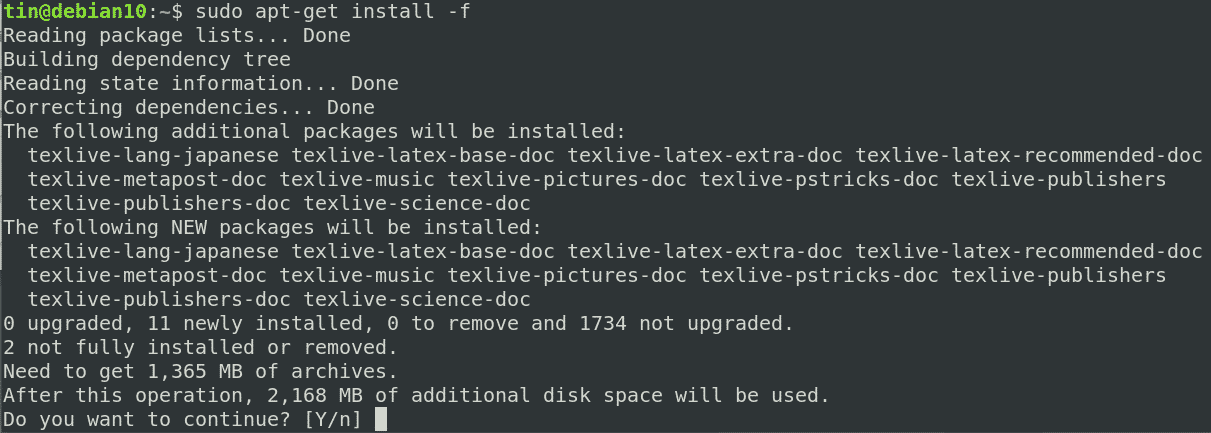



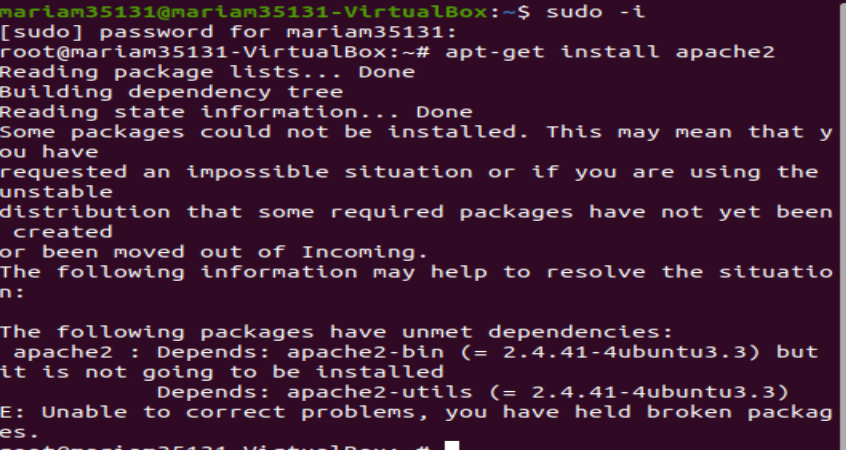






![How to fix an errors installed packages have unmet dependencies in Ubuntu 20.04 LTS Linux [2021] - YouTube How To Fix An Errors Installed Packages Have Unmet Dependencies In Ubuntu 20.04 Lts Linux [2021] - Youtube](https://i.ytimg.com/vi/l7TUxEjSXM8/maxresdefault.jpg)







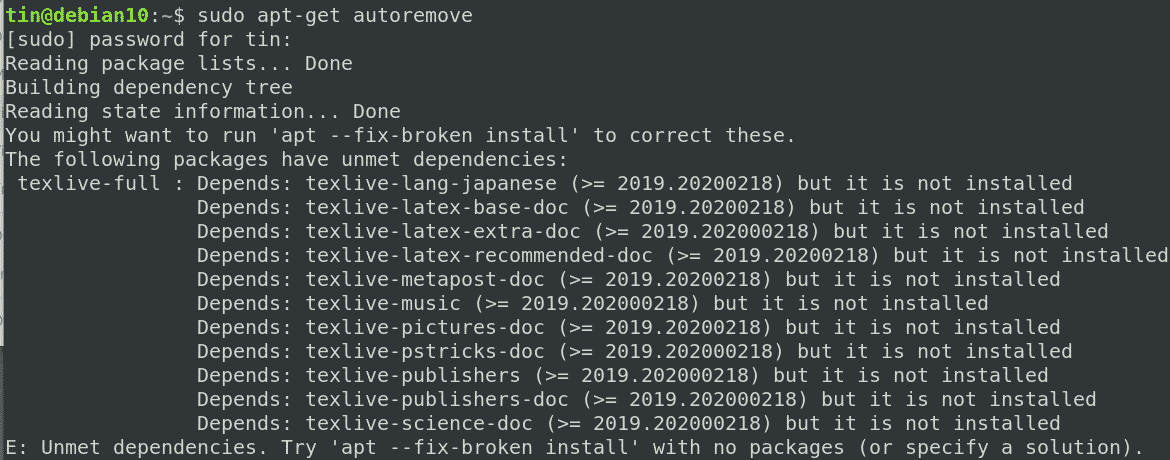

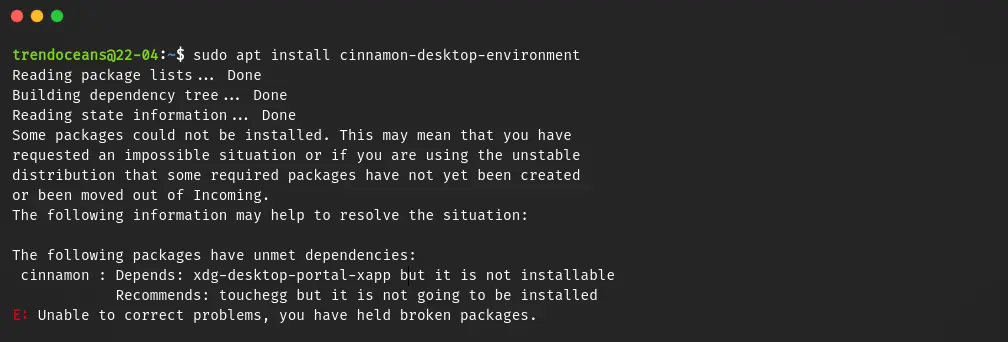

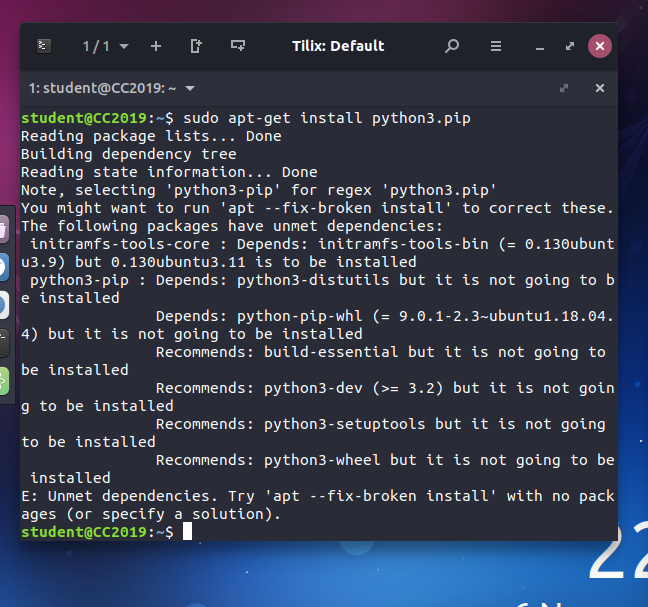


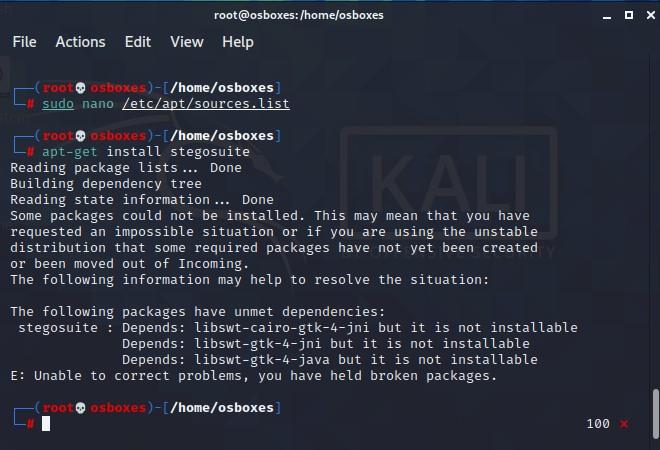


Article link: the following packages have unmet dependencies.
Learn more about the topic the following packages have unmet dependencies.
- The following packages have unmet dependencies!
- How do I resolve `The following packages have unmet …
- Resolving Unmet Dependencies on Linux – Baeldung
- How to Fix the “The following packages have unmet …
- How to Resolve Unmet Dependencies in Ubuntu – Fedingo
- How to Fix the “The following packages have unmet …
- How to Find and Fix Broken Packages on Linux – MakeUseOf
- Installing Dev Dependencies with npm: Beginners’ Guide – KnowledgeHut
- Why do I receive an unmet dependencies error in Kali Linux?
- Following Packages Have Unmet Dependencies On Ubuntu
- linux – What is the step-by-step procedure to fix … – Super User
- Unable to upgrade/install Plesk on Ubuntu/Debian
- How to Fix Unmet Dependencies Error on Ubuntu – Appuals.com
See more: nhanvietluanvan.com/luat-hoc